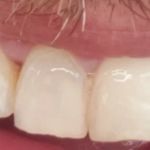How to Whiten Teeth Safely Without Causing Damage
Having a bright, white smile is something many of us strive for, but it’s important to know how to whiten teeth safely without causing damage. Teeth whitening is a popular cosmetic procedure, but not all whitening methods are created equal. In fact, some can cause more harm than good, leading to sensitive teeth, gum irritation, or even permanent damage to the enamel.
Whether you're looking to remove surface stains from coffee or wine, or you're seeking a long-term solution to brighten your smile, it’s crucial to choose the right whitening methods. This article will guide you through various whitening options, share tips for protecting your enamel, and highlight the best ways to whiten teeth safely at home or at the dentist.
1. Understanding Teeth Staining and Whitening Options
Before diving into whitening methods, it's essential to understand why teeth become stained and how whitening works. Teeth can become discolored due to a variety of factors such as poor oral hygiene, certain foods and beverages (like coffee, tea, or wine), smoking, and even aging. The outer layer of the tooth, called enamel, can absorb these stains, leading to a dull or yellowish appearance.
When choosing a whitening option, it's important to know that not all treatments work the same for every type of stain. Stains on the surface, known as extrinsic stains, are typically easier to treat than those that have penetrated deeper into the tooth (intrinsic stains). Whitening products typically target surface stains but may also penetrate the enamel to break down deeper discolorations.
There are two main types of teeth whitening treatments: at-home products and professional whitening procedures. At-home options include over-the-counter toothpaste, whitening strips, gels, and mouthwashes, while professional treatments involve dentist-administered whitening procedures that may use stronger bleaching agents. The key to whitening safely is choosing the right product for your needs and following all usage instructions carefully.
2. The Importance of Choosing Safe Whitening Products
While many teeth whitening products promise dramatic results, not all of them are safe for your teeth and gums. Overuse of whitening products, especially those containing harsh chemicals like hydrogen peroxide, can lead to enamel erosion, which can make your teeth more vulnerable to sensitivity and decay.
To ensure you whiten your teeth safely, it’s important to choose products that are specifically designed for your enamel. Look for products that are approved by the American Dental Association (ADA), as these have been tested for safety and effectiveness. For instance, ADA-approved toothpaste that gently whitens teeth while promoting enamel health is a great starting point for at-home whitening.
If you’re considering whitening strips or gels, be sure to follow the recommended application guidelines. Overusing these products or leaving them on longer than suggested can damage your enamel, leading to long-term problems. Opting for products with lower concentrations of bleaching agents can help minimize the risk of damage while still providing visible results.
3. How to Whiten Teeth Safely at Home
At-home teeth whitening methods can be convenient and cost-effective, but it’s important to use them correctly to avoid causing harm to your teeth. One of the safest at-home whitening methods is using a whitening toothpaste that contains mild abrasives, which help remove surface stains without being too harsh on the enamel. Whitening toothpaste can be used daily to gradually brighten teeth without causing sensitivity.
Another option is using whitening strips that contain peroxide-based bleaching agents. These strips are applied to your teeth for a short period (typically 30 minutes to an hour). Be sure to choose products that recommend limited usage to avoid irritation or damage to your gums and enamel. Whitening strips should be used sparingly to prevent overuse and enamel wear.
For a more natural approach, you can try oil pulling with coconut oil. Oil pulling involves swishing a tablespoon of oil around your mouth for 10-15 minutes to help remove surface stains. While this method won't provide instant results, it is a safe and natural way to maintain a brighter smile without harsh chemicals.
4. Professional Whitening: A Safe and Effective Option
If you want faster, more noticeable results, professional whitening treatments offered by dentists can be a great option. Professional whitening procedures use stronger bleaching agents that are applied under controlled conditions, ensuring that your teeth are whitened without damaging the enamel.
One common professional whitening treatment is in-office bleaching, where a dentist applies a strong whitening gel to the teeth and activates it with a special light. This treatment can provide immediate results and is often ideal for individuals with stubborn stains or those looking to achieve a dramatically whiter smile. However, professional whitening should only be performed by a trained dental professional to ensure your safety and comfort.
Another option is take-home whitening kits prescribed by your dentist. These kits typically use a lower concentration of bleaching agents and come with custom-fitted trays to ensure even application. While this option may take longer to see results, it is a safer alternative for people with sensitive teeth or those who prefer whitening at home under the supervision of their dentist.
5. Tips for Maintaining White Teeth Without Causing Damage
After achieving your desired level of whiteness, it's important to maintain your results while preventing further damage to your enamel. One of the most effective ways to maintain a white smile is to avoid foods and beverages that can stain your teeth, such as coffee, tea, red wine, and sugary drinks. If you do consume these items, be sure to rinse your mouth with water afterward or brush your teeth shortly after eating or drinking to reduce the risk of stains.
Maintaining a good oral hygiene routine is also crucial for keeping your teeth white and healthy. Brush your teeth at least twice a day using a fluoride toothpaste, floss daily to remove plaque buildup, and visit your dentist regularly for cleanings and checkups. Regular cleanings can help remove surface stains and prevent the buildup of tartar that can make your teeth appear yellow.
Finally, avoid using overly abrasive products to clean your teeth. While products that contain baking soda or activated charcoal can be effective at removing stains, they can also be too abrasive for enamel if used too frequently. Always consult with your dentist before using any new whitening products to ensure they are safe for your teeth.
6. Conclusion: Achieving a Bright Smile Without Compromising Your Oral Health
Whitening your teeth can be a safe and effective way to improve the appearance of your smile, but it’s important to choose the right methods to avoid causing damage. Whether you’re using at-home products or opting for professional treatments, always prioritize safety by following instructions, using approved products, and maintaining a healthy oral hygiene routine.
If you're looking for more tips on maintaining your oral health or want to explore professional whitening options, visit Dentistry Toothtruth for expert advice and recommendations. A bright, healthy smile is within your reach—just be sure to whiten safely!







 Schooley Dental0.0 (0 review)
Schooley Dental0.0 (0 review) Maui Whitening Orlando4.0 (32 review)
Maui Whitening Orlando4.0 (32 review) Dr. Jack Sabol3.0 (3 review)
Dr. Jack Sabol3.0 (3 review) Puntillo and Crane Orthodontics4.0 (339 review)
Puntillo and Crane Orthodontics4.0 (339 review) Destination Dental Care4.0 (102 review)
Destination Dental Care4.0 (102 review) Toothbeary Pediatric Dentistry4.0 (101 review)
Toothbeary Pediatric Dentistry4.0 (101 review) The Importance of Oral Health Education During Pregnancy for a Healthy Pregnancy
The Importance of Oral Health Education During Pregnancy for a Healthy Pregnancy Best Tips for Brushing Your Teeth Properly for Healthy Gums: Essential Techniques for Oral Health
Best Tips for Brushing Your Teeth Properly for Healthy Gums: Essential Techniques for Oral Health Why Skipping Dental Checkups Can Lead to Bigger Oral Health Problems
Why Skipping Dental Checkups Can Lead to Bigger Oral Health Problems Advantages of Porcelain Dental Restorations
Advantages of Porcelain Dental Restorations How Can Diabetes Cause Tooth and Gum Problems? Preventing and Managing Oral Health Issues
How Can Diabetes Cause Tooth and Gum Problems? Preventing and Managing Oral Health Issues Healthy Habits for Promoting Good Oral Health and Hygiene: Tips for a Healthy Smile
Healthy Habits for Promoting Good Oral Health and Hygiene: Tips for a Healthy Smile